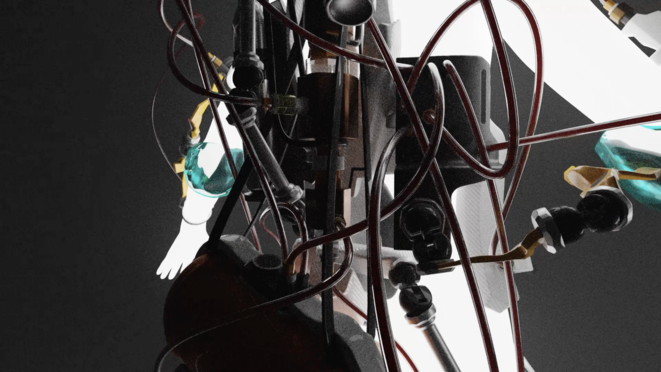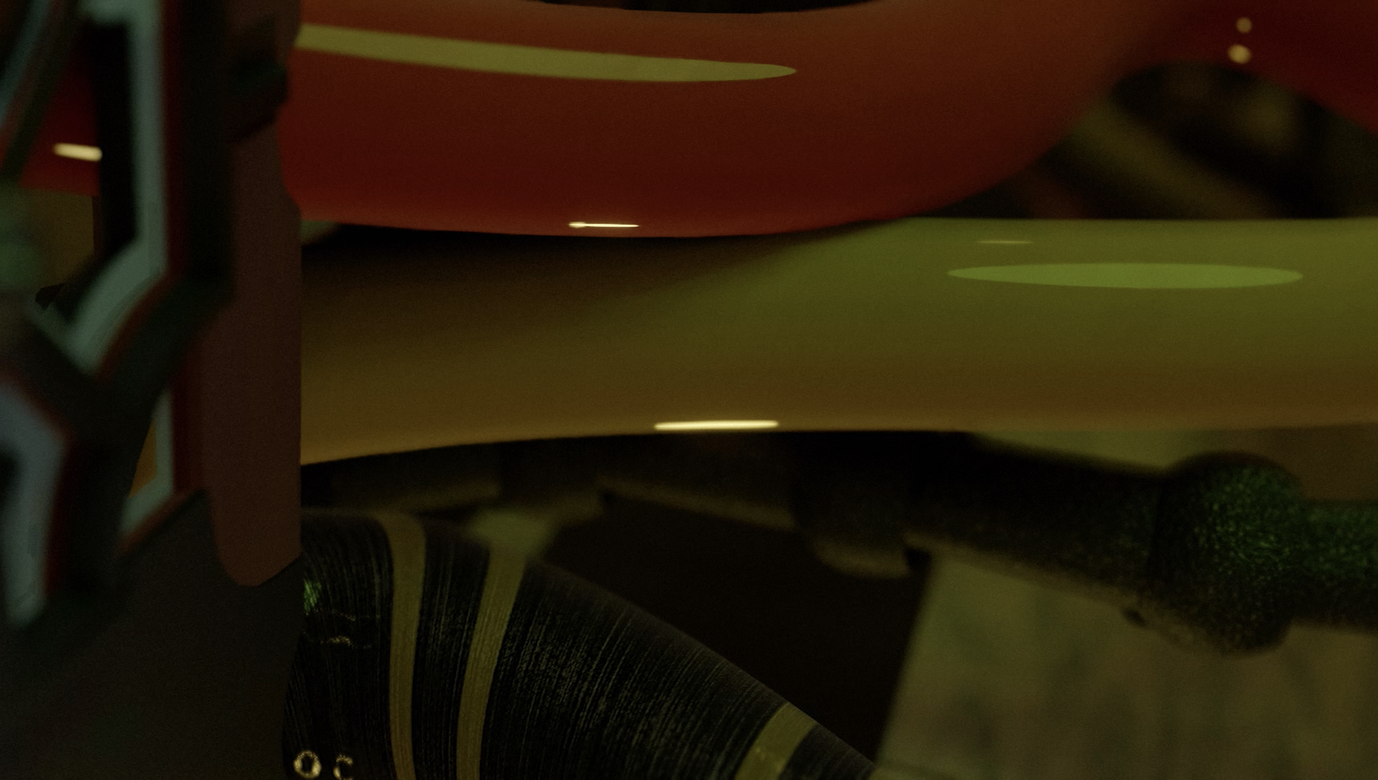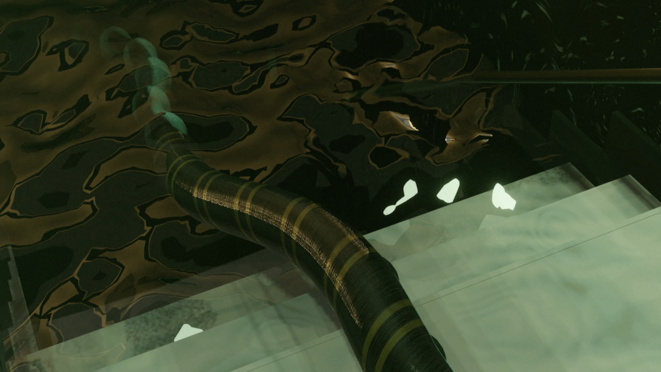Hierarchical Entanglement
In a time where the theories and debates about our (human’s) entanglement with the world abound, it is always important to emphasise that while this line of thinking is so immensely important and allows for new perspectives and narratives that offer ways of questioning our anthropocentric colonisation of the biosphere, it is urgent to stress how this entanglement is inherently hierarchical. Elizabeth A. Povinelli emphasises this hierarchical quality in the extimacy of existence; our entanglement with and within the world around us. In line with thinkers like Donna Haraway and Karen Barad, Povinelli describes this entanglement as the externality of the interiority of subjectivity. We are external to ourselves and are in relation with the world in an extimate sense, as opposed to an intimate. The extimacy or entanglement of existence or symbio-genesis, shouldn’t be thought of as configurations of separated entities that have strings attached to them and in that way are interconnected – as in: I am connected with the cloud of dust in the sense that a webbing stretches between us. Rather it is about borderlessness. As Barad puts it: ‘To be entangled is not simply to be intertwined with another, as in the joining of separate entities, but to lack an independent, self-contained existence. Existence is not an individual affair. Individuals do not preexist their interactions; rather, individuals emerge through and as part of their entangled intra-relating. Which is not to say that emergence happens once and for all, as an event or as a process that takes place according to some external measure of space and of time, but rather that time and space, like matter and meaning, come into existence, are iteratively reconfigured through each intra-action, thereby making it impossible to differentiate in any absolute sense between creation and renewal, beginning and returning, continuity and discontinuity, here and there, past and future.’ (2007) How temporality and eventality is included into the entanglement discourse by Barad is worth noting – it opens up to the idea of a temporal extimacy that has to do with a non-chrononormative approach to the quasi-event and the existence within tempor(e)ality.
Gluttonous Contemporary Art
So entanglement or exctimacy is not about how separated entities exist in a webbed setting, but rather how these separated entities does not exist. The borders of the imagined separated entities, what Povinelli describe as embankments, are constructed. Skin is one of these embankments that seem to render the body into a self-contained entity, but in reality opens up to everything around it, liquidly inhabiting and departing from its host. Povinelli stresses that this extimacy is by no means smooth. On the contrary, it is very messy. It is not a smooth homogeneous entanglement but is rather differentially entangled. ‘How these knots are formed is a result of the current arrangement of power’. (Povinelli, 2018) Contemporary art practices have gluttonously embraced the post-human discourse around the entangled existence, celebrating how the entanglement of materials (be they organic or non-organic, cognitisers or non-cognitisers) in this theoretical line of thought, mirrors the artist’s externalised/internalised relationship to the materials engaged in the artistic process. It shapes a strange exposure of the mystical logic of the artistic venture (ie. the extimate relation with materials), now made ripe for direct literal extraction – the books on these topics spill over with ready-to-use exemplifications of these entanglement processes expressed through merged materials acting as preconceived sculptures ready for the white cube. The overarching tendencies for contemporary art to act polite and smooth (even in its messiness) often leaves it glossing over the horrendous differentiated messiness of it all.
To be Affected and to Affect
But the amount to which we are made extimate is hierarchically determined. It is a differentiated entanglement. ‘It is clumped, clustered and distributed’. (Povinelli, 2018) It is surely not the same parameters of extimacy that holds true to all subjects in the world. Some will have more to say about the levels of entanglement, than others. Hierarchical structures determine the ways in which entanglement procedures play out, in relation to amounts of exposure and impact. In the realm of slow violence it is obvious that if you belong to groups of disadvantage, poverty, oppression, subjugation or disenfranchisement you are more likely to feel the messiness of these entanglement processes. You are more likely to have less control over the stability and maintenance of the embankments; you are also less likely to have any influence on how these calamities of entanglement are to be distributed. In reverse, if you are more fortunately placed in a hierarchical structure, you are more likely to not only have some authority over the amount of entanglements you engage in, but really also have an influence in how the affect on others are to be administered. The distribution of these two poles most often fall out in this fashion – the rich can affect, the poor can mainly be affected. This is a rather important point if we return to the relation between entanglement discourse and contemporary art. This discourse is often engaged as a sort of a-political generator of artworks that speak mainly to the complicity with materials and only carries a political agenda in the form of a professed concern about the environment, rather than exploring the critical clash in difference between whom gets to affect and whom are restricted to only being affected by this entanglement. There is an unnatural split between the practices engaged with the Anthropocene, the hyper-object, Object Oriented Ontology and entanglement discourse, and practices engaged with socio-political structures, activism, social projects, class struggle, community work, etc. The two should be intimately connected, since the evental visibility of the one is directly linked to the quasi-evental invisibility of the other.
-
contents
- The Wall
- Soft Hands
- Introduction
- Navigation
- Methodology
- Transrealism
- Tempor(e)ality
- Meanderer
- Atmosphere
- Horror
- Horror in The Fabric
- Sublime Now
- Beyond Real and Abject
- Finance
- Absolute Capitalism
- Finance as Horror Stage
- "Popular Unrest"
- Event
- Prolonged Now
- Auto-symbolisation
- Messy Extimacy
- "Anhell69"
- Fieldnotes from Island
- Island of Trash
- Suicide Slide
- Iguana POV
- Cable ITCH
- Necklace
- Staircase
- In The Hall of the Mountain King
- Field Notes from Archipelago
- Archipelago - No One is an Island
- Gore rig
- Mumblegore
- Prosthesis
- The Pit
- Cathedraltown
- Hand Signals
- Splash
- Temps Morte
- Rebootism
- Bull and Bear
- Subtle Background Scare
- Oceanic Horror
- WORKS
- Literature and Sources
- APPENDIX
- Soren Thilo Funder
-
navigation
-
abstract
Søren Thilo Funder PhD in Artistic Research University of Bergen Faculty of Fine Art, Music and Design The Art Academy – Department of Contemporary Art Supervisors: Daniel Jewesbury, Darla Crispin, Anne Helen Mydland and Frans Jacobi. Artistic reflection and documentation of artistic result submitted in partial fulfillment of the requirements for the degree of Philosophiae Doctor (PhD) in Artistic Research at the University of Bergen. Date of public defence: 8.12.2023 'Oceanic Horror - or How to Survive the Night in the Haunted Mansion of Absolute Capitalism' is an artistic research project that explores the potentials of utilising the genre of horror fiction to create new narratives in a political and time-based art practice. It is invested in the temporal qualities and entanglements of the horror genre and how these relate in strange ways, not only to our current tempor(e)ality and the modes of financialisation that informs this, but also to art practices using the temporal as material. Framed around the revisiting of the mid-nineties trading firm 'Island' in the advent of high frequency trading and its successor the trading company 'Archipelago', pushing the algorithmic trading systems further into the splash of web 2.0, 'Oceanic Horror' uses the methodologies of Transrealism and Meandering to create new nonlinear narrations revolving around the relationship between the opaque structures of absolute capitalism and the socio-political horror experienced in everyday life. The research project searches for a certain condition found in horror fiction, that relates to its relentless nowness, its proposed prolonging of this now, its relation to eventality and the quasi-event and finally how horror fiction wants to do things to the body - not only in a simple reaction mode but really in the very temporality experienced in and by the body. The artistic result of 'Oceanic Horror' was exhibited at Kunsthall 3.14 in Bergen 21.04.2023 - 04.06.2023, comprising a multi-channel video installation combining digital renderings with fictional cinematic scenes in an immersive total installation of office furniture sculptures forming makeshift sleep stations in the exhibition space. The reflection for 'Oceanic Horror' is presented in this Research Catalogue exposition, including both written material, images and a comprehensive archive of all the video works that make up the entangled narratives of 'Oceanic Horror - or How to Survive the Night in the Haunted Mansion of Absolute Capitalism' Norwegian: 'Oceanic Horror - or How to Survive the Night in the Haunted Mansion of Absolute Capitalism' er et kunstnerisk forskningsprosjekt som utforsker mulighetene i sjangeren skrekkfiksjon til å skape nye utrykk og narrativer i politisk og tidsbasert kunstpraksis. Prosjektet utforsker skrekksjangerens temporale oppbyggning, estetikk og kvaliteter. 'Oceanic Horror' anvender både som kunsteriske metoder og utrykk 'transrealisme' og 'meandering' for å skape nye ikke-lineære fortellinger og kunst som dreier seg om forholdet mellom de ugjennomsiktige strukturene i 'absolutt kapitalisme' og den sosio-politiske 'horroren' som oppleves i hverdagen. Med utgangspunkt i historien om det reelle handelsfirmaet 'Island', som i midten av nittitallet var med i oppstarten av høyfrekvent aksjehandel, og dens etterfølger, selskapet 'Archipelago', som ledte bølgen av algoritmiske aksjehandelssystemer i web 2.0, søker forskningsprosjektet etter en viss tilstand som finnes i horror fiction, som relaterer seg til dens nådeløse nåhet, dens foreslåtte forlengelse av dette 'nå', dets forhold til 'event' og 'kvasi-event' og hvordan horror fiction ønsker å gjøre ting med kroppen - ikke bare i en enkel reaksjonsmodus, men egentlig i selve temporaliteten som oppleves i og av betrakterens kropp. Det kunstneriske resultatet av 'Oceanic Horror' ble vist på Kunsthall 3.14 i Bergen 21.04.2023 - 04.06.2023. Utstillingen besto av en flerkanals videoinstallasjon som kombinerer digitale gjengivelser med fiktive filmatiske scener. Vist i en totalinstallasjon av kontormøbelskulpturer som danner provisoriske sovestasjoner i utstillingsrommet. Den kunsteriske refleksjonen som følger 'Oceanic Horror' presenteres på Research Catalogue og inkluderer både tekster, bilder og et omfattende arkiv av alle videoverkene som utgjør de sammenfiltrede fortellingene til 'Oceanic Horror - or How to Survive the Night in the Haunted Mansion of Absolute Capitalism'
- Soren Thilo Funder - Oceanic Horror or How to Survive the Night in the Haunted Mansion of Absolute Capitalism - 2024
- Meta
- Comments
- Terms


